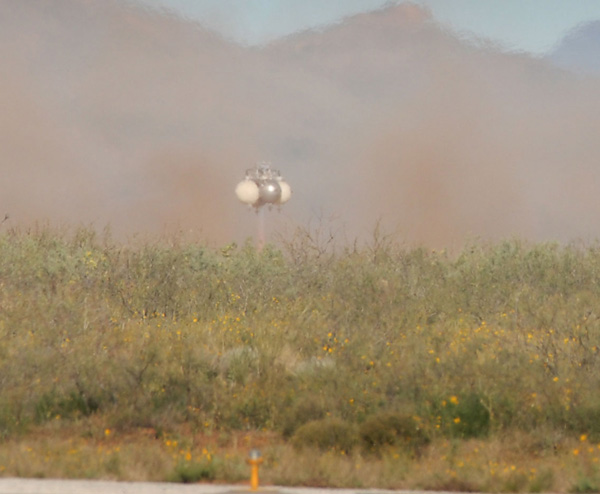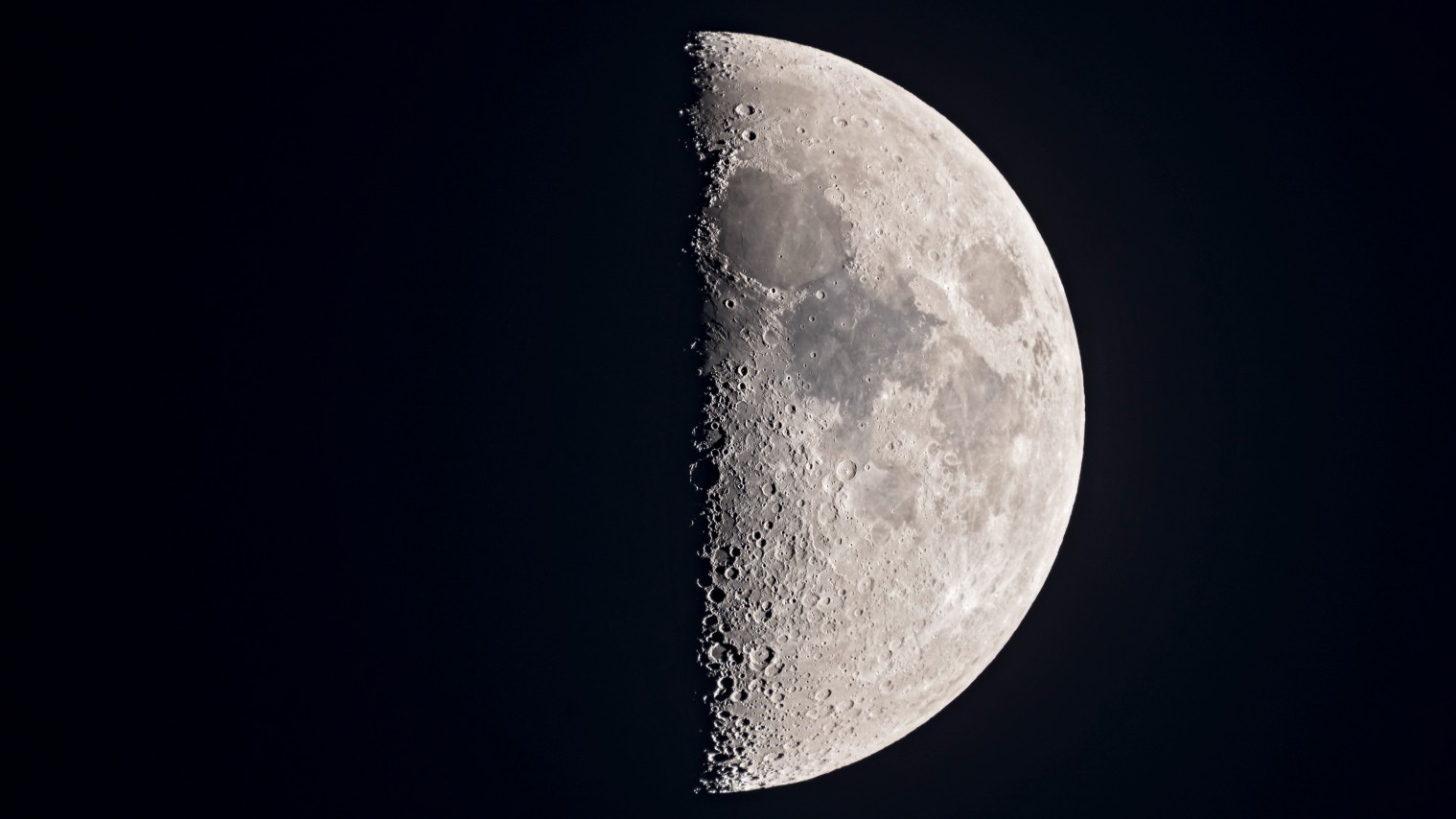Lunar Lander Rocket Runs Into Touchdown Troubles

LASCRUCES, New Mexico -- A privately-built rocket rose skyward today at the WireflyX Prize Cup--but failed in its bid to win NASA prize dollars for taking an innovativeapproach to spacecraft building.
Thehardware, named Pixel, was built by Armadillo Aerospace--a vertical takeoffand landing vehicle.
Roaringoff into New Mexico skies over barren landscape, the Armadillo Aerospace vehicle rose to altitude,remained aloft, roared horizontally a distance, but ran into trouble on landing.
Thecraft missed a precise touch down, tipping over onto the ground. Yesterday, during the first leg of the two-day challenge, the same craft came down too fast causing breakage of its landing gear. [See video.]
Overnightfixes to software and hardware led to the second attempt today at grabbing NorthropGrumman Lunar Lander Challenge prize money offered by NASA.
The NASA-sponsored Challenge is part of the two-day Cup being held October 20-21 at the Las Cruces International Airport. NASA is providing $2 million in prize money for the challenge.
Better luck next time
Get the Space.com Newsletter
Breaking space news, the latest updates on rocket launches, skywatching events and more!
Pixelis the brainchild of space entrepreneur John Carmack and his team at ArmadilloAerospace of Mesquite, Texas. Carmack is also co-founder and chief technicalengineer of id Software.
"Wehad a beautiful looking flight," said William Pomerantz, Director of SpaceProjects for the X Prize Foundation, headquartered in Santa Monica, California. The vehicle tookoff just like it was supposed to, he said, attained the minimum altitude,hovered expertly, but missed its mark on landing.
"Theyhave not formally met the requirements this time period. They'll have to lookto the next one," Pomerantz said.
Froma quick look over the vehicle, Carmack and his team thought that they couldrepair the same vehicle--Pixel--and fly it again later today.
Level 1 prize money
WilliamGaubatz, lead judge for the Northrop Grumman Lunar Lander Challenge, told SPACE.comthat Pixel landed with two legs on, two legs off the landing pad. That factdisqualifies them for a reflight and a chance to win the Level 1 Lunar LanderChallenge prize.
"Theyare going to bring it back, see if they can do a repair, and get into the nextflight opening later today," Gaubatz said. They would again attempt a Level 1flight, he said.
"Itwas a beautiful flight," Gaubatz said, a flight that was longer than yesterday."Landing is tough," he concluded.
Winningthe Level 1 competition is worth $350,000 in prize money--a purse provided byNASA's Centennial Challenges. This NASA effort is meant to promote technicalinnovation through a novel program of prize contests.
Rocketteams for the Lunar Lander Challenge are scored on their ability to meetchallenge requirements, the accuracy of their landing and, in case of a tie,the number of "round trips" they can complete within a specified period oftime.
- VIDEO: Complete Coverage of the X Prize Cup
- LIVE Coverage of the X Prize Cup
- Lunar Lander Rocket Flies But Fails In Bid For Prize Dollars
- Challenges Ahead for Spaceport America
- Astronaut Advice for Future Space Tourists
- Progress Touted In Private Space Travel
- Showtime for Spaceship Builders
- Space Elevator: Hoist to the Heavens
Join our Space Forums to keep talking space on the latest missions, night sky and more! And if you have a news tip, correction or comment, let us know at: community@space.com.

Leonard David is an award-winning space journalist who has been reporting on space activities for more than 50 years. Currently writing as Space.com's Space Insider Columnist among his other projects, Leonard has authored numerous books on space exploration, Mars missions and more, with his latest being "Moon Rush: The New Space Race" published in 2019 by National Geographic. He also wrote "Mars: Our Future on the Red Planet" released in 2016 by National Geographic. Leonard has served as a correspondent for SpaceNews, Scientific American and Aerospace America for the AIAA. He has received many awards, including the first Ordway Award for Sustained Excellence in Spaceflight History in 2015 at the AAS Wernher von Braun Memorial Symposium. You can find out Leonard's latest project at his website and on Twitter.
